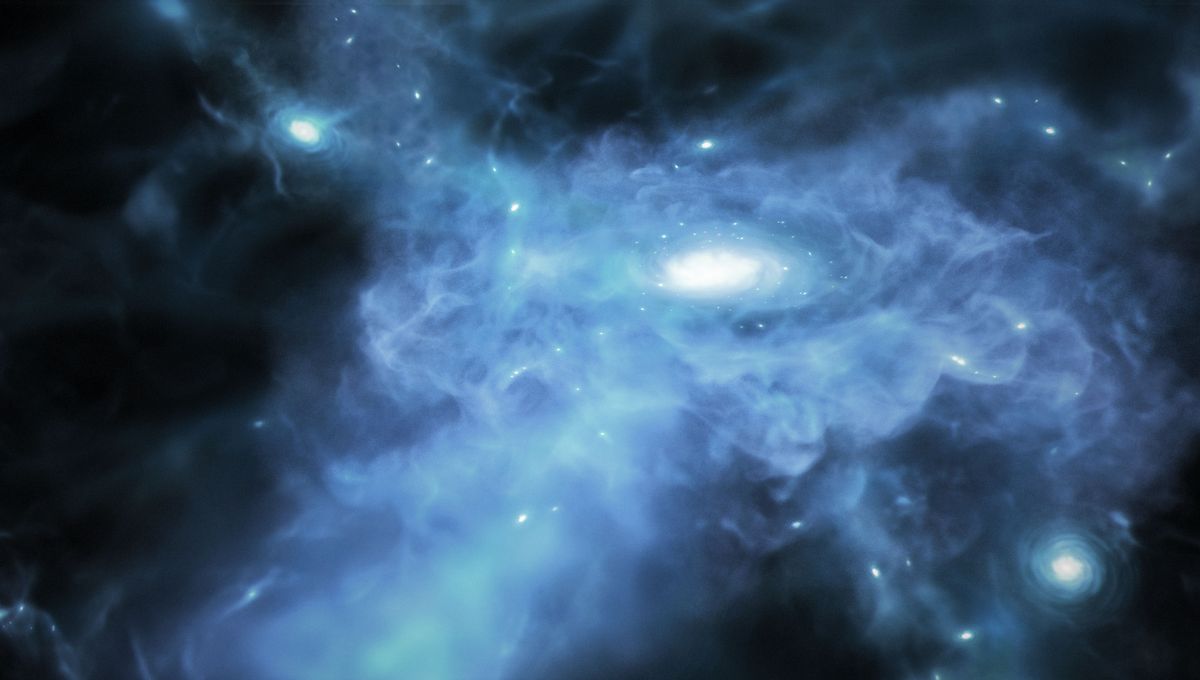
Astronomers have used the JWST to cast their eyes farther into the past than ever before, witnessing some of the earliest galaxies ever actively forming between 400 and 600 million years after the Big Bang. The space telescope was able to determine that these objects are surrounded by a lot of gas.
Images from the JWST show these objects as little red splotches. They are almost at the limit of the telescope’s visibility – but size doesn’t matter. The light we obtain from them tells us interesting facts. Breaking down the light spectrum, the researchers could see that some of the light was absorbed immediately by gas which is believed to be hydrogen and helium.
“These galaxies are like sparkling islands in a sea of otherwise neutral, opaque gas,” lead author Kasper Heintz, an assistant professor of astrophysics at the Cosmic Dawn Center (DAWN) at the University of Copenhagen, said in a statement.
“We’re moving away from a picture of galaxies as isolated ecosystems. At this stage in the history of the universe, galaxies are all intimately connected to the intergalactic medium with its filaments and structures of pristine gas,” added Simone Nielsen, a co-author and PhD student at DAWN.
These galaxies are in the Epoch of Reionization. This is the age of the universe when the light of the first stars began to rip electrons from the neutral gas within and around galaxies. It took stars and galaxies nearly one billion years to ionize all of the gas, making it transparent. The observations of these galaxies suggest we are looking at crucial moments in this process.
“The gas must be very widespread and cover a very large fraction of the galaxy. This suggests that we are seeing the assembly of neutral hydrogen gas into galaxies. That gas will go on to cool, clump, and form new stars,” added Darach Watson, a co-author who is a professor at DAWN.
“The fact that we are seeing large gas reservoirs also suggests that the galaxies have not had enough time to form most of their stars yet.”
There are many open questions about the Era of Reionization as well as these particular observations. Among the latter, there is the location of the gas in the galaxy and if it contains elements other than hydrogen and helium. Answers to these provide insights into bigger unknowns, such as: When were the first stars born? How did they die?
“The next step is to build large statistical samples of galaxies and quantify the prevalence and prominence of their features in detail,” Heintz said.
A paper describing the results is published in the journal Science.
Source Link: Birth Of The Earliest Galaxies In The Universe Seen For The First Time